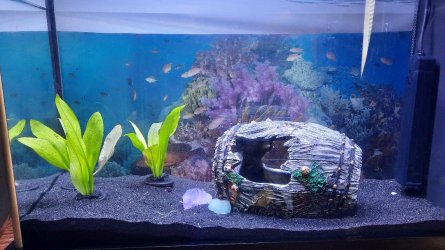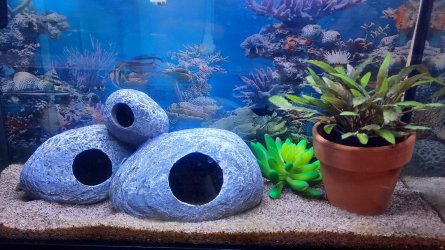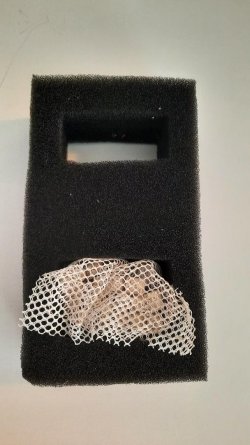So per the exact instructions of a local fish expert (she owns a fish store and has been in business for decades), I have a bucket (5g) which I add my tap water to and then add the Prime and Stability (per amounts prescribed on the chemicals). I add the tap water to the bucket at least a day or two in advance of adding it to the tank for water changes. Also attached to the bucket is an extra heater, so when I do the water change, the water is closer to tank temp.
If you contact your water supply company by phone or website, find out if you have chlorine or chloramine in the tap water. If you have chlorine, then you can aerate the tap water for 24-48 hours and the chlorine will come out by itself.
If you have chloramine, then you need to use the dechlorinator to neutralise the chlorine part of the chloramine. Chloramine is a mixture of chlorine and ammonia. It stays active for longer (months) and doesn't come out of water very easily. Water companies use it when water has to travel long distances or the weather is warm because it remains active for a lot longer than chlorine on its own.
If you have chloramine, then add the dechlorinator 30 minutes before using the water and aerate the bucket of water during that time. This will allow the dechlorinator enough time to come into contact with all the chloramine and neutralise it.
Most dechlorinators that are designed for chloramine will have something to bind with or convert the ammonia into ammonium, making it safer for the fish. This is a temporary change and only lasts around 24 hours. After that the ammonium changes back to ammonia. If you add the dechlorinator and let the water sit for a couple of days, the ammonia gets converted to ammonium for a day and then reverts back to ammonia. Dechlorinating the tap water about 30 minutes before you use it will mean ammonium goes into the tank instead of ammonia, which is safer for the fish.
----------------------
I also have a live plant in my tank (see above pics), and I only use the light that was provided to me by the set about 8 hours per day. There is no direct sunlight, but the room does have two windows, and so the tank will get indirect light.
You only have 1 pot of live plants (a Cryptocoryne). Whilst this plant will use light coming down on it, the rest of the aquarium has no plants and algae will grow in these parts because there are no live plants to use the light there. A floating plant would help if it was allowed to grow over 1/3 to 1/2 of the tank.
----------------------
Now, questions. This is where I get confused since everyone has so much different advice. I was told to change the filter media (and by filter media, you mean the charcoal) about once a month. The filter pad (or foam block that holds the charcoal in one pocketed area and the biomax in another), no one has ever told me to change. I've been told it is OK to rinse it and squeeze out the old water, provided that the biomax NOT be rinsed.
But what do you mean "I don't need carbon in a filter"?
Filter media/ materials get colonies of good bacteria living on them. These bacteria convert ammonia into nitrite and nitrate. If you change filter media, you get rid of the good bacteria and the tank can get ammonia or nitrite readings that can kill the fish and other inhabitants (snails, shrimp, etc).
Most filters have a sponge, ceramic beads and carbon. Sponges are one of the best filter materials because they trap gunk and hold beneficial filter bacteria.
Ceramic beads hold beneficial filter bacteria but don't trap gunk.
Carbon removes various chemicals and some heavy metals from water and the carbon filter pads can trap some dirt/ gunk, but that is about it.
In an average aquarium you don't need carbon because there shouldn't be any chemicals or heavy metals in the water. If there is, then you should be finding out where they are coming from and get a cleaner water source. You also don't want to drink tap water that has chemicals or heavy metals in because they are bad for all people, animals, birds, fish and reptiles.
If you have carbon in the filter, you can replace it with a sponge. If the filter does not have sponges specifically for it, buy a sponge for a different brand of filter and use a pair of scissors to cut the sponge to fit in your filter.
I'm not sure what's in the Biomax.
----------------
Established filters (that are more than 6 weeks old) should be cleaned about once a month. The media can be washed/ squeezed out in a bucket of aquarium water and the media is re-used. The bucket of dirty water is poured on the lawn or garden.
----------------------
Secondly, how can I better control the algae? If there is going to be algae on the glass, it totally defeats the purpose of having a tank, which is to see the fish. I'm having to clean the glass 20 minutes after I clean the glass.
Have the light unit towards the rear half of the aquarium.
Add more live plants. Floating plants like Water Sprite (Ceratopteris thalictroides/ cornuta) are good plants to try. If you get too many, you can plant them in the gravel and they grow well underwater too.
----------------------
You probably have information overload about now and I don't blame you. It can all be a bit hard to follow when first starting out and the whole situation is made worse when the fish aren't well and when you get conflicting information. Just try to go one day at a time and take it step by step and you should be ok.




